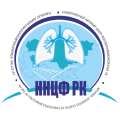Received: 15.10.2024 Accepted: 01.12.2024 Published online: 30.12.2024
DOI 10.26212/2227-1937.2025.62.81.014
УДК 616.831-005.4-089.168
INTERNATIONAL PRACTICES IN OPTIMIZING TIME METRICS FOR REPERFUSION THERAPY
IN ACUTE ISCHEMIC STROKE
Shayakhmet Makhanbetkhan1, ORCID: https://orcid.org/0000-0003-2606-4785
Botagoz Turdaliyeva 2, ORCID: https://orcid.org/0000-0001-9884-0777
Yerzhan Adilbekov3, ORCID: https://orcid.org/0000-0002-9166-3859
Mynzhylky Berdikhojayev4, ORCID: https://orcid.org/0000-0003-1260-5923
Sabina Medukhanova 3, ORCID: https://orcid.org/0000-0002-8808-6106
Abzal Zhumabekov5, ORCID:https://orcid.org/0000-0002-8508-3129
Marat Sarshayev 5, ORCID: https://orcid.org/0000-0003-1757-9189
Sharapat Moiynbayeva1*, ORCID:https://orcid.org/0000-0003-1720-5064
1 Kazakhstan’s Medical University “KSPH”, Almaty, Kazakhstan
2 Kazakh Scientific Center of Dermatology and Infectious Diseases, Almaty, Kazakhstan
3National Coordination Center for Emergency Medicine, Astana, Kazakhstan
4Hospital of the Medical Center of the Presidential Administration, Astana, Kazakhstan
5 JSC «Central Clinical Hospital», Almaty, Kazakhstan
*Corresponding author:
Sharapat Moiynbayeva, Master of Medicine, postdoctoral student at the KMU “KSPH”, Deputy Director of the Department of
Science and Consulting, Almaty, Kazakhstan.
e-mail: moyinbaeva@inbox.ru phone number:8 (707) 427-86-34
Abstract:
Introduction. Acute ischemic stroke (AIS) remains one of the leading causes of mortality and long-term disability worldwide.
Reperfusion therapy, including thrombolysis and thrombectomy, is highly time-sensitive and significantly improves patient
outcomes when administered promptly. However, international variations in treatment time metrics and accessibility pose
challenges to optimizing outcomes globally.
The aim of the review:This review aims to analyze key time metrics for reperfusion therapy, such as door-to-puncture (DTP)
and door-to-groin puncture (DTGP), in high- and upper-middle-income countries. It seeks to identify factors influencing
treatment efficiency and outcomes to provide actionable recommendations for healthcare systems, including Kazakhstan.
Materials and methods:A systematic review was conducted using PubMed, Scopus, Web of Science, and Cochrane Library
databases. Studies published between 2005 and 2021 were included, focusing on time metrics such as DTP, onset-to-needle
(OTN), DTGP, onset-to-groin puncture (OTGP), and onset-to-door (OTD). A total of 27 studies were selected using PRISMA
guidelines, and key findings were extracted for comparative analysis.
Results:The analysis revealed significant international variability in time metrics. Countries like Switzerland and the
USA/Canada demonstrated shorter DTP and DTGP times, correlating with higher percentages of favorable outcomes at 90 days.
These metrics underscore the importance of efficient emergency services and hospital workflows. Additionally, disparities in
access to advanced stroke care were identified, particularly in regions with fewer stroke centers and endovascular specialists.
Conclusion: This review highlights the critical role of optimizing time metrics to improve patient outcomes in AIS.
International best practices, such as dual-modality approaches combining thrombolysis and thrombectomy, can serve as
models for improving stroke care efficiency. For Kazakhstan, the findings emphasize the need to reduce treatment delays by
enhancing prehospital systems and developing regional stroke centers. Future efforts should focus on addressing global
disparities and standardizing key metrics to facilitate comparisons and improvements in care.
Keywords: Acute Ischemic Stroke, Reperfusion Therapy, Time-to-Treatment, Thrombolytic Therapy, Thrombectomy, Door-toPuncture Time, Door-to-Groin Time, Healthcare Disparities, Stroke Units, Treatment Outcome
INTERNATIONAL PRACTICES IN OPTIMIZING TIME METRICS FOR REPERFUSION THERAPY IN ACUTE ISCHEMIC STROKE
Скачать: INTERNATIONAL PRACTICES IN OPTIMIZING TIME METRICS FOR REPERFUSION THERAPY IN ACUTE ISCHEMIC STROKE
Скачано: 154, размер: 1.0 MB
